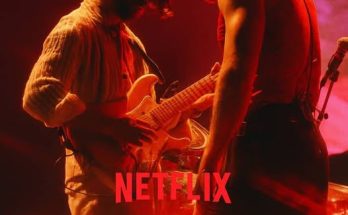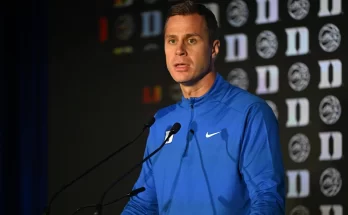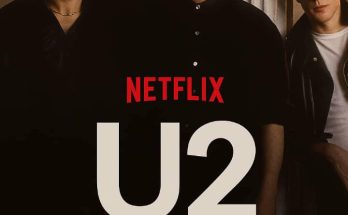The Golden State Warriors face what may be the most pivotal offseason decision of this era, centered on Jonathan Kuminga’s impending restricted free agency and the increasingly likely scenario of a sign‑and‑trade. With the offseason already in full swing and the Draft concluded, the spotlight has shifted squarely to Kuminga, whose future with the franchise hangs in the balance. The Warriors’ front office, led by Mike Dunleavy, must determine whether to keep Kuminga and try to integrate him more meaningfully, match any potential offer sheet, or facilitate a sign‑and‑trade that could yield assets to reinforce key roster needs.
Kuminga, the former seventh overall pick in 2021, enters restricted free agency after declining a lucrative contract extension that would have paid him approximately \$150 million over five years—a decision that, in hindsight, he may regret ([reddit.com][1]). His last season was an uneven journey: inconsistency and role frustration through most of the year, sidelined at points in the rotation, followed by an electrifying four‑game burst in the Western Conference semifinals against Minnesota, where he averaged roughly 24 points per game on efficient shooting . That late postseason surge underscored Kuminga’s elite athleticism and scoring potential but also laid bare the friction between his desire for a central role and the Warriors’ preferred motion‑offense structure under Coach Steve Kerr.
Golden State must now position itself to either retain Kuminga or recoup meaningful value if he walks. Their current payroll exceeds \$170 million, and adding a deal in the \$30 million per year range could push them into or above the first luxury tax apron near \$195 million, with cascading financial constraints . Simply matching an offer sheet may be theoretically possible under Bird‑rights, but doing so would lock the Warriors into a hard cap and severely limit flexibility to sign role players, pursue free agents, or absorb incoming salaries ([sfstandard.com][4]). A sign‑and‑trade could offer a smarter path. Under current CBA rules, the outgoing salary in such a deal is calculated based on Kuminga’s base‑year value—roughly 50 percent of his new salary—effectively reducing the amount that counts against Golden State for trade matching purposes. That mechanism allows the Warriors to package Kuminga with other assets or contracts and land a player or picks without crippling cap consequences.
But the base‑year compensation rule introduces complexity. If Kuminga signs a deal starting near \$30 million, teams receiving him count the full amount, while the Warriors only get credit for half for matching. This discrepancy will severely limit the pool of sign‑and‑trade candidates and require precise structuring. League insiders have flagged this as the major complication: the base‑year rule combined with the first‑apron cap limit “significantly limits the amount of sign‑and‑trade opportunities that can realistically be executed”. To make a deal work, Golden State will likely need to include additional salaries, future picks, or expiring contracts that absorb cap space while maximizing return possibilities.
An internal draft tree further underscores the team’s desire for financial flexibility. The Warriors recently traded the No. 41 draft pick for Nos. 52 and 59, a move aimed at increasing cheap rookie contracts and payroll breathing room while still chasing late‑round developmental prospects. That shows they’re strategically shifting roster construction to maintain cap agility and create room for potential trades or sign‑and‑trades.
Within the locker room, Kuminga’s position is precarious. He recognizes the stakes and has publicly stated he’s “inviting trade questions” and wants to learn more about the business side of sign‑and‑trade mechanics . His agent and representation, led by Aaron Turner, are clearly preparing for a scenario that may not include an extension with Golden State. Meanwhile, management reaffirms he remains a “main priority” alongside other restricted free agents like Pat Spencer and team options for Gui Santos and Quinten Post ([sfchronicle.com][3]).
The timing is urgent. Kuminga can sign an offer sheet starting this week, and the Warriors have until July 6 to match. With the Summer League looming in early July, offloading Kuminga could clear space to bring in supplemental talent, particularly in shooting or size—areas they’ve identified as weaknesses .
Multiple trade partners have surfaced. Chicago, Brooklyn, Portland, Utah, and Washington are among the teams reportedly tracking Kuminga, with the Nets and Bulls potentially leading the charge ([sportsnaut.com][8]). Nets have the greatest capacity to absorb his salary via sign‑and‑trade, as they are projected to have around \$40 million in cap space . The Bulls have also shown interest, likely with a package of younger or less expensive assets. Chicago’s Coby White has been mentioned as the kind of player Golden State could realistically get back ([si.com][9]). Portland, Utah, and Washington could provide complementary offers depending on their draft capital and financial structure .
On the Warriors’ side, front office sources are evaluating configurations that include both picks and complementary players—expiring contracts, wings, or a big like Giannis? No; maybe a shooter or a center . Their aim is twofold: extract value in return and tailor incoming pieces to support Curry, Butler, and Green while managing long-term cap health.
Fans and pundits are split. A popular sentiment on Reddit is that a sign‑and‑trade is the best outcome: better than keeping Kuminga on a \$30 million-plus deal that could burden cap and squad chemistry, [reddit.com][10]). One vocal fan noted, “S\&T is our best option. Certainly better than keeping him at \$30M/year,” adding that Kuminga could be “used to create a high salary spot… bring in a player more prepared to help contend” ([reddit.com][10]). Others express concern that Golden State may match anything, regardless of cost ([sfgate.com][11]). On the flip side, some analysts believe re-signing Kuminga, though messy, remains the simpler route to avoid missing out entirely .
Veteran NBA evaluators suggest that the optimal move for Kuminga is to find a fresh situation where he can play a more defined role . A sign‑and‑trade allows Golden State to get something for him, preserve their development timeline for Curry, Butler, and Green, and potentially get a player like Coby White—a rotational piece, ball‑handler, or shooter—as well as picks .
However, the sticky detail is the complexity of CBA rules. Until contracts are signed and the offer sheets are filed, optimizing a sign‑and‑trade structure is like building a puzzle with shifting pieces. The financial mechanics are being worked through behind closed doors, but early signals suggest the front office and Kuminga’s camp will proceed cautiously, aiming to keep all options open until the July 6 matching deadline.
If Golden State ultimately keeps Kuminga, they may have to hard‑cap under the first apron but also perhaps make room to re-sign role players via mid‑level exceptions—including perhaps wings and bigs to complement the core . That path requires Kerr and staff to better integrate Kuminga, who must buy into a bench or small‑ball four role and operate within a motion‑oriented offense. If both sides agree, this is plausible, but development and consistency remain concerns.
If they opt for the sign‑and‑trade, Golden State must navigate APRON constraints to land an incoming player or picks without triggering hard caps or luxury penalties. Any taker must accept customizing cap allocations for both sides. In this scenario, the Warriors could exit with a mid‑tier player and draft assets or a trade exception better suited for their timeline. A potential hurdle is matching salary with incoming player value—Kuminga’s 50 percent rule means they have to add salaries to match bigger returns .
Another consideration: with Stephen Curry entering the twilight of his career, and payments to Butler and Green looming large, Golden State must consider the long‑term architecture of their lineup. If Kuminga departs, they must fill his athleticism and youth with either draft picks or trades. His presence—if retained—could also act as a bridge to the future. But without consistent on‑court fit, that path is increasingly tenuous.
Teams on the periphery—Washington, Portland, Utah—offer potential creative trade partners. The Washington Wizards, rebuilding and in need of young scoring wings, fit a template and carry cap space to absorb a heavily‑backloaded Kuminga contract . Portland could try a youth swap—their shoot‑first guard corps versus Golden State’s need for size or defense. The Jazz, flush with picks, could match via cap filler in exchange for future assets . Any deal requires buy‑in from both sides on immediacy and player fit.
If a sign‑and‑trade fails to materialize due to CBA hurdles—or if Kuminga declines the Warriors’ counteroffer—a fallback is Golden State matching a straight offer sheet. That’s the riskiest route: it locks them into large payroll commitments and low flexibility for years to follow. But it preserves potential upside if Kuminga continues to develop under Kerr’s system, especially if he takes on a sixth‑man role or off‑ball spot where his athleticism can shine without disrupting flow.
By early July, this storyline will crystallize. The Warriors must weigh between a complicated but asset‑generating sign‑and‑trade or a cap‑burdening, role‑questionable retention. They remain one of the league’s financially heftiest teams, but the trade‑off between cap health and on‑court fit could define the next era.
Jonathan Kuminga’s saga—his postseason performance, his desire for a bigger role, his lack of extension, and his openness to trade conversations—makes Part 2 of the 31 Scenarios series the most intriguing yet. Whether the Warriors keep him and invest in role clarity, move him for a more system-friendly return, or allow him an escape route in free agency, his departure or retention will fundamentally shape Golden State’s path beyond the Curry‑Butler‑Green window.
At its core, the Kuminga situation highlights the tension between potential and fit, flexibility and loyalty, individual ambition and team blueprint. As one veteran scout told ESPN, “The best thing that happens to him is if they sign‑and‑trade him”. Golden State’s challenge is to make that happen in a way that suits their competitive timeline and maintains frontcourt balance.
From a roster‑building perspective, this decision ranks among the most consequential of recent Warriors history. Keep Kuminga at \$30 million and risk cap gridlock, or unleash him for returns that could shore up missing pieces—shooters, defenders, or bench depth. The front office, steered by Dunleavy, must weigh CBA mechanics against team architecture and long‑term competitiveness. The clock is ticking.


